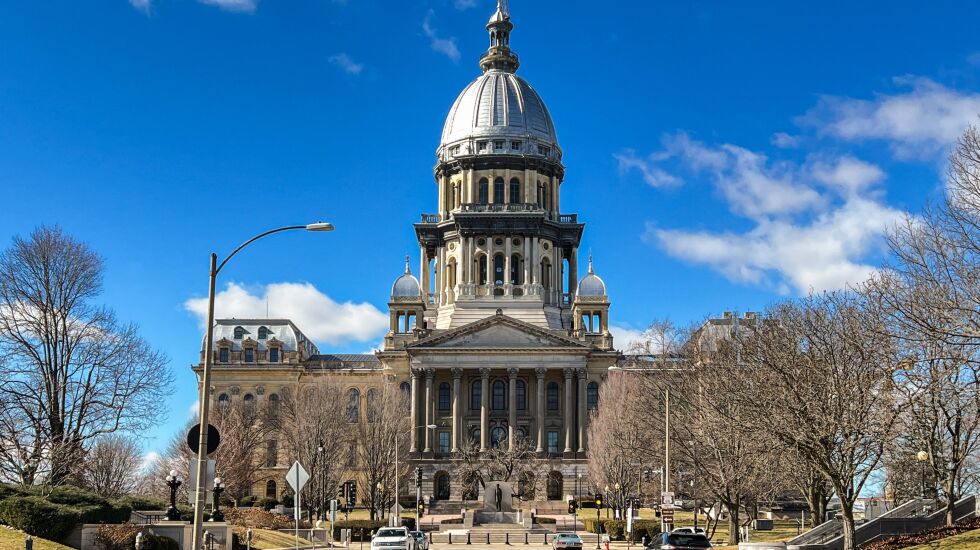
Two certainties in life are death and taxes. But in Illinois we know there’s a third: woefully underfunded public pension systems for both the state of Illinois and city of Chicago.
Consider the state first. As things stand today, the five state pension systems collectively have $248 billion in liabilities but only $109 billion in assets. That results in a staggering unfunded liability of $139 billion.
It also means the state systems have an overall “funded ratio”— that is, ratio of assets to liabilities — of just 44%. I say “just” 44%, because ratings agencies like Standard and Poor’s have pegged the minimum funded ratio for being considered financially healthy at 80%, while the American Academy of Actuaries maintains the goal should be getting pension systems 100% funded.
Then there’s Chicago, which is in even worse shape. Sure, the aggregate unfunded liability of $35.4 billion the city owes is less than the debt the state’s racked up. But the funded ratio across Chicago’s four pension systems is a meager 26.4%, which ranks among the worst in the nation. Given the scope of the problem, it’s time vital decision makers resolve it effectively, by devising a solution that actually addresses the root cause of the issue.
Unfortunately crafting an efficacious solution has proven quixotic, in large part because many believe, wrongly, that these ginormous pension shortfalls exist because the benefits earned by public sector workers — like teachers, fire fighters and police officers — are overly generous, even though the evidence has never supported that canard.
For those who care about facts, here’s some data. Since 1995, Illinois’ unfunded liability grew by $122 billion. But only 4% of that growth was due to benefits. The real culprit that’s driven most of that growth — over 42% of it in fact — is the notorious “Pension Ramp” enacted in 1995.
Back then, after decades of intentionally underfunding contributions, the state systems had a funded ratio of just 54.2%. So legislators passed the pension ramp, which established a schedule for repaying pension debt intended to get the systems 90% funded by 2045.
That sounded good and responsible but in reality was neither. Instead, the pension ramp was a boondoggle, designed to create fiscal relief in the short term and push off actually funding the pensions for decades.
It accomplished this sleight of hand by creating a repayment plan that was so inadequate on the front end it actually increased the debt Illinois owed to its pension systems for 15 years. It then back-loaded payments at rates that jump annually by unaffordable amounts.
It’s a similar story for Chicago, which got its own version of a pension ramp foisted upon it by state lawmakers. According to the city’s financial statements, the greatest increase in its unfunded liabilities occurred between 2007 and 2020, when Chicago’s pension debt shot up by $22 billion. Inadequate front-end contributions under Chicago’s ramp account for fully 60% — or $13.2 billion — of that growth. Conversely, over the 2007–2020 sequence, worker salaries and benefits didn’t contribute even one red cent to the growth in Chicago’s unfunded liabilities.
Nope, benefit levels have never been the problem, that is, until now. And no, not because benefits recently spiked through the roof. Quite the opposite in fact. Benefits have become too miserly. Back in 2010, Illinois created a lesser pension benefit package dubbed “Tier 2” that not only cut retirement benefits, but also cut the cost of living adjustment and imposed a higher retirement age.
Yet despite receiving substantially reduced benefits, Tier 2 workers have to make the same out-of-pocket pension contribution as do folks with the better Tier 1 package. This means a portion of the contribution made by Tier 2 workers isn’t being used to fund their retirement benefits at all, but rather to pay pension debt owed by the city and state for Tier 1. That’s manifestly unfair.
Worse, Tier 2 benefits are so low, they don’t come close to approximating what someone would get under Social Security. That’s problematic, given the state and city are currently exempt from enrolling most of their respective workforces in — and paying for — Social Security. But that exemption is legally valid only for so long as the pension benefits the state and city provide are equivalent to Social Security.
Which means two things have to happen.
First, Tier 2 benefits must be substantially enhanced — or the city and state will have to assume the prohibitive cost of enrolling Tier 2 workers in Social Security.
Second, the mayor has to sit down with the governor and General Assembly to build a path forward that not only provides better retirement benefits to public workers enrolled in Tier 2, but also creates a rational approach to paying for those benefits, while getting the pension systems healthy and being affordable for taxpayers.
Ralph Martire is executive director of the Center for Tax and Budget Accountability, a nonpartisan fiscal policy think tank, and the Arthur Rubloff Professor of Public Policy at Roosevelt University. Reach him at rmartire@ctbaonline.org
Send letters to letters@suntimes.com
The views and opinions expressed by contributors are their own and do not necessarily reflect those of the Chicago Sun-Times or any of its affiliates.







